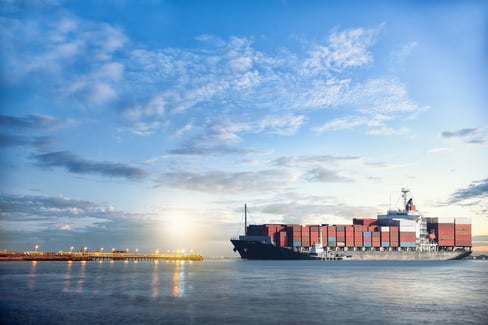Exploring the Last Three Years of Supply Chain Progress and Challenges
As we reflect on the tumultuous past three years, it's impossible not to wonder if any progress has been made with regards to the disruptions that were induced by the pandemic.
Supply chain companies were severely impacted by lockdown measures and reduced shipping capacity, resulting in a challenging environment for manufacturers to adapt to the “new normal”. Consequently, we witnessed empty shelves and panicked consumers struggling with short supply, including a shortage of toilet paper during the pandemic's peak.
In this article, we will delve into the topic of whether any significant improvements have been made since the pandemic began. It's important to note that our focus will be solely on this subject, and we won't touch upon discussions surrounding inflationary pressure and its potential impact on supply chains.
Are there indicators that supply chain issues are improving?
Yes, there are indicators that the supply chain issues are improving such as:
Restocked shelves
One of the most apparent improvements has been the alleviation of empty shelves. During the pandemic's tumultuous peak, supply chains were severely strained, which led to many businesses struggling to meet demand. Products would quickly sell out and remain out of stock for significant periods of time.
Fortunately, as the supply chain has become more robust, empty shelves have become less of an issue for businesses. Logistics companies have been able to reconfigure their supply chains and find new sources for materials and products, ensuring that customers always have what they need at pre-pandemic levels.
Note, however, that the improvement in the availability of goods is not universal across all industries or regions. Certain products, such as electronics and home appliances, may still experience longer lead times due to global supply chain disruptions.
Narrowing Shipping Delays from Port to Port
As the supply chain operations have improved, we’ve seen better efficiency and coordination from original port to destination port. Routes have become more organized, with shipping containers carrying goods all over the world in a timely manner, ensuring that products are delivered quickly.
 Per Flexport’s Ocean Timeliness Indicator:
Per Flexport’s Ocean Timeliness Indicator:
It took more than 110 days for goods to make their way from Asia to the US in October 2021; that has dramatically fallen to 95 days in the week ending July 10. While 15 days may not seem that dramatic, it makes a huge difference to American shoppers used to 2-day shipping — and it's a rate not seen since mid-2021.
Source: Business Insider
Furthermore, in light of the challenges posed by the COVID-19 pandemic, U.S. ports took decisive action to adapt and thrive in a rapidly changing world. This means rethinking supply chain strategies, bolstering labor forces, and making much-needed improvements to infrastructure in order to accommodate a surge in demand requirements.
In particular, the myriad smaller ports stepped up to the plate, taking on the vital role of relieving pressure from their larger counterparts. By leveraging cutting-edge automation systems, these smaller facilities are proving that they, too, can play a crucial role in the transportation ecosystem.
With an eye towards the future, these ports are implementing new technologies and strategies designed to support higher traffic volumes, facilitate new supply chain routes, and ensure the safety of the working professionals who power our economy.
The Important Role of Radwell’s Asset Recovery in the Supply Chain
Radwell's massive inventory of surplus parts and repair services has played a critical role in the midst of the pandemic when manufacturers and plant managers have faced significant challenges in maintaining their supply chain and production lines.
The need for a reliable supplier of replacement parts has become more critical than ever, and Radwell's extensive inventory levels of new and surplus parts has played a crucial role in supporting industries during the difficult time relieving some pressure on supply chains.
With Radwell's massive selection of top-quality parts, companies can quickly find what they need to keep their production lines running smoothly easing some supply chain bottlenecks. This means less downtime, faster order fulfillment, and better customer satisfaction. And when purchasing a new part is not feasible, Radwell's expert repair services provide a cost-effective solution to keep operations up and running so consumer demand can be met.
Supply Chain Improvements in the last Three Years and What’s Ahead
Recent years have witnessed a concerted effort to enhance the global supply chain, and companies like Radwell have stepped up to offer solutions that alleviate the associated strains in supply chain management.
The industry has adapted to new behaviors and expectations, re-designed their supply chains to minimize risks and maximize efficiency, and invested heavily in technology to improve visibility and automate processes. By taking a proactive approach to addressing potential issues, businesses have been able to stay ahead of disruptions and maintain customer satisfaction.
Looking ahead, businesses can expect more improvements in the supply chain. Companies are investing in the digital transformation of their processes and equipping themselves with the latest technologies to ensure they stay ahead of any potential disruptions. Automation is being used to streamline operations, while artificial intelligence (AI) is being used to provide greater insights into customer behavior, helping them better anticipate demand patterns and manage inventory levels accordingly.
These technologies will improve the accuracy and reliability of information, allowing businesses to operate with greater agility and knowledge of their environment.
Learn more about how Radwell can support your supply chain needs

